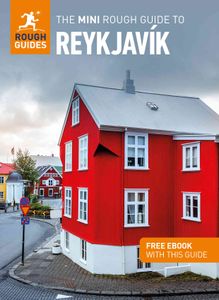When the north wind doth blow
The stretch of road from Akranes, particularly around Hafnarfjall, on the southern approach to Borgarnes, is one of the most hazardous in the entire country. Totally exposed to the Atlantic, it takes the full brunt of violent storms which drive in from the sea; not surprisingly, it closes frequently during the winter months, as cars have been overturned here by the brute force of the wind. In summer things are not quite so severe, but it is still an extremely windy spot.
Egill’s Saga
Few characters in literature have been as sharply drawn as the eponymous hero of Egill’s Saga. The story tells the life of the sullen, brutish and ugly Egill Skallagrímsson (c.910–990), whose personality is glimpsed before he even appears in the tale, when both his grandfather and father are revealed as “shape-shifters”, or werewolves. From his youth through to his dotage, Egill is depicted as relentlessly mean and trouble-making, though also industrious, clever and a gifted poet, and the final picture of him is of a remarkable and complex individual, who never seeks an easy path through life. The saga was probably written by the thirteenth-century politician Snorri Sturluson, and it’s no coincidence that its central framework, that of a free man stubbornly defying the might of the Norwegian throne, mirrored the political situation in Iceland at the time of its composition, when Norway was attempting to annex the country.
Egill was born to Norwegian parents who had settled in Iceland to escape the wrath of their king, Harald Fairhair. The most telling event of his youth is when his father Skallagrímur’s wolfish nature erupts during a ball game, and he tries to kill the 12-year-old. Egill’s nurse saves him, but both she and Egill’s best friend are killed by Skallagrímur, and Egill’s revenge is to murder his father’s favourite slave at dinner that night. A few months later, Egill makes the first of many Viking expeditions, meeting the man who is to become his arch-enemy: King Eirik Bloodaxe of Norway (c.895–954), Harald’s son. Re-igniting the family feud, Egill falls out with the king and manages to humiliate him publicly, kill his son and survive an attempt by Queen Gunnhildur to poison him – all in one night. Having lost the respect of his subjects and been shamed out of Norway, King Eirik takes up residence across the North Sea in Viking Jórvík (York) only to receive an unexpected visitor – Egill has been shipwrecked on the Yorkshire coast and decides to settle up with his foe. Although condemned to death, he composes a poem in praise of the king and his life is spared.
After many successful years as a Viking, Egill returns to Iceland around 957 and settles down as a farmer. Then tragedy strikes: his sons Böðvar and Gunnar die in accidents and Egill is so distraught he decides to starve himself to death. But his daughter Þorgerð tricks him into drinking some milk and composing a poem – known as Sonatorrek, “Lament for my sons” – and he becomes so caught up in the work that his spirits revive.
According to the Saga Egill lived out his final years in Mosfell, just outside Reykjavík. There, taunted by servants as he sits blind and incontinent by the fire, he plans one last act of mischief: to take his hoard of Viking silver to the Alþing, and start a riot by scattering it among the crowds. Frustrated in this by his daughter-in-law, one night Egill vanishes along with his loot and two servants. He’s found the next morning, stumbling blindly alone in the fields, and admits to having hidden his treasure and killed the men. He dies later that year, irascible to the last, and is eventually interred – as befits his violent, pagan life – at the boundary of Mosfell’s churchyard.
Top image: Stone Fence and Grassy Roofs in the Countryside near Borgarnes, Iceland © Martin Silva Cosentino/Shutterstock























